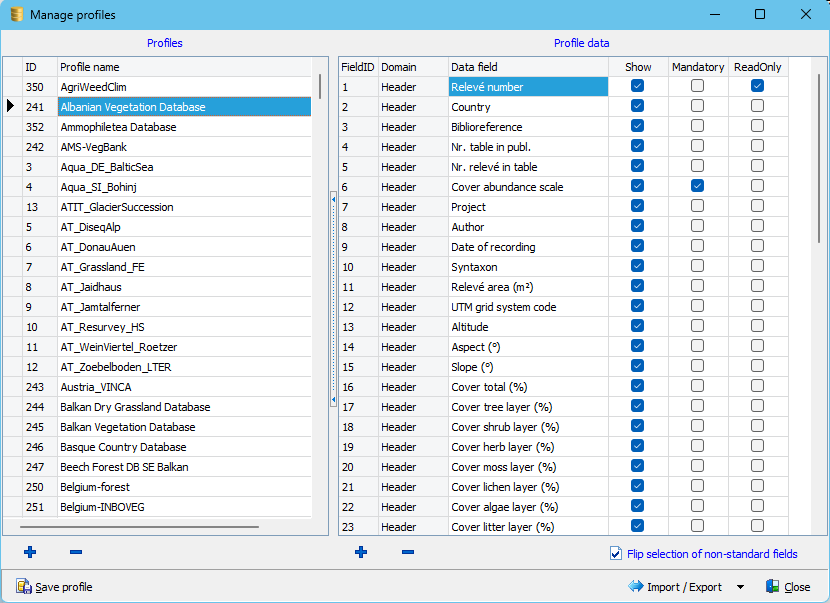A profile represents a collection of data fields (the list on the right side of the screenshot below). In this list data fields can be added by selecting them from a pool, or can be deleted. They also can be hidden (uncheck the box in the 'Show' column), can be marked as Mandatory and /or as 'ReadOnly'. The order of the fields can be changed by simply dragging a row to another position in the list (left click on the very first grey column and hold down the mouse key when dragging the row to another position).
Each dataset is connected to a profile. When importing a Turboveg2 database Turboveg3 automatically creates a profile and gives it the same name of the imported database. This is now the assigned profile for the created dataset. However, a dataset can easily be connected to another profile (see Manage datasets). It is also possible to add a new profile (table in the left part of the screenshot) and define the list of fields to be included from scratch. In fact, it is possible the connect all datasets to a single profile.
A profile can be removed from the list, but only if it is not assigned to any dataset.
New profiles can be added by clicking the + button located below the list with profiles on the left side. After a new name has been defined a number of fields can be added on the right side.
Profiles can be exported and imported. This especially useful when bringing a profile to another database. Note that when importing a profile only fields will be taken into account that are present in the database.
